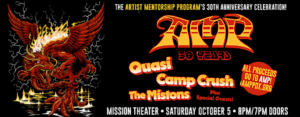Written By: Daniel Cina
If there is one thing stoners are known for its ingenuity when in need of a smoking apparatus. We all have fond memories of finding random papers to roll joints, carving out fruits to make a pipe, making gravity bongs from bottles, or even the legendary hot knife method so we could enjoy toking on some sticky icky green goodness.
Stoners over the years have gone above and beyond over the years in finding the most ingenious ways to enjoy our favorite plant, and it is this ingenuity that has driven the evolution of cannabis products over the years. Today we are here to talk about the history and ingenuity behind one of arguably the most simplistic, convenient, and iconic way to enjoy cannabis, that’s right people I’m talking about joints!
In this article we will cover the joints inception and journey through history, where we will show you how this piece of stoner ingenuity inspired products, people, and even cultures!
How Cigarettes Began
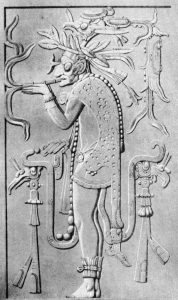 To first understand how joints came to be, we must first back-track a bit to the invention of the cigarette (we do not endorse smoking cigarettes this is purely educational). The earliest cigarettes have roots in 9th century Mexico and Central America which were used by The Maya and later the Aztecs. These early cigarettes were fashioned from reeds and tubes, where they smoked tobacco and other psychedelic drugs during rituals.
To first understand how joints came to be, we must first back-track a bit to the invention of the cigarette (we do not endorse smoking cigarettes this is purely educational). The earliest cigarettes have roots in 9th century Mexico and Central America which were used by The Maya and later the Aztecs. These early cigarettes were fashioned from reeds and tubes, where they smoked tobacco and other psychedelic drugs during rituals.
When the Spanish discovered this, they brought the idea back to Spain where they developed cigarettes out of plant-based wrappers, and by the 17th century they began to fashion these wrappers out of fine paper and thus rolling papers were born!!
Then Joints
As I earlier stated, cigarettes have roots in Mexico and so when the Spanish began utilizing rolling papers, they made their way all over Europe and North America, but most importantly back to Mexico. While most likely, someone somewhere discovered it earlier, the first recorded use of a joint dates to 1856 in Guadalajara. A pharmacist at the University of Guadalajara observed and recorded Mexican field workers who were rolling cannabis and tobacco into their papers technically making the first recorded joint in history a spliff!
As I am sure you can infer already, but it did not take long for the use of joints to start spreading around to other countries beyond Mexico and the USA was no exception by any means.
The First Commercial “Marijuana Cigarette”
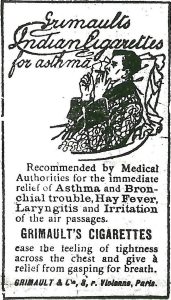 Cannabis has a rich history in early America where hemp was a major crop, and since the first settlers at Jamestown it was utilized for rope, sails, clothing, and to smoke in their pipes. Americans continued to utilize hemp through its colonial age and in 1870 Grimault’s Indian Cigarettes were the first commercial joints ever sold in America. It is important to note however that Grimault & Co. was a French based company that sold these all over Europe and North America.
Cannabis has a rich history in early America where hemp was a major crop, and since the first settlers at Jamestown it was utilized for rope, sails, clothing, and to smoke in their pipes. Americans continued to utilize hemp through its colonial age and in 1870 Grimault’s Indian Cigarettes were the first commercial joints ever sold in America. It is important to note however that Grimault & Co. was a French based company that sold these all over Europe and North America.
These joints were made for medicinal purposes and believed to relieve congestion for those with asthma, however that notion is easily dispelled by modern medicine. These early joints from Grimault & Co. contained cannabis (obviously), but also contained tobacco, datura, and belladonna. The presence of these other drugs made Grimault’s Indian Cigarettes incredibly unhealthy especially due to the presence of datura and belladonna otherwise known as The Deadly Nightshade. Overtime these medicinal cigarettes became less and less popular with Grimault’s Indian Cigarettes disappearing of the shelves by the 1930’s (which was most definitely a good thing).
How Joints Became Popular
 Grimault’s Indian Cigarettes disappeared off the shelves by the 1930’s but the popularity of joints was only getting started and the roots of that popularity stems from early 20th century African American culture. The most popular types of music in the “Roaring 20’s” was jazz music which flourished in historically African American communities such as Harlem and New Orleans. Just as popular as jazz however were the artists who performed it.
Grimault’s Indian Cigarettes disappeared off the shelves by the 1930’s but the popularity of joints was only getting started and the roots of that popularity stems from early 20th century African American culture. The most popular types of music in the “Roaring 20’s” was jazz music which flourished in historically African American communities such as Harlem and New Orleans. Just as popular as jazz however were the artists who performed it.
Many of jazz’s most famous artists such as Duke Ellington, Louis Armstrong, John Coltrane, Ella Fitzgerald, and Billie Holliday all indulged on these “Jazz Cigarettes” as they were called at the time to help inspire creativity in their music and because it allowed them to play long nights without feeling the incapacitating effects of alcohol. Like any devoted fan, those who listened to these iconic jazz musicians and many others began to smoke joints as well.
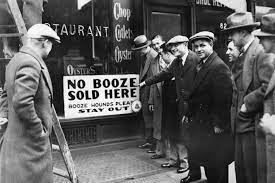 What also contributed to catapulting the joint into popularity alongside Jazz was the Volstead Act of 1919, otherwise known as the American Prohibition on Alcohol. People found obtaining alcohol more difficult, expensive, and risky and so “Jazz Cigarettes” quickly became a go-to alternative for those who wanted to indulge on something but had no access to alcohol. While Speakeasies of the Roaring 20’s were filled with jazz music and flooded with alcohol, joints had a major presence of their own in these Speakeasies as well.
What also contributed to catapulting the joint into popularity alongside Jazz was the Volstead Act of 1919, otherwise known as the American Prohibition on Alcohol. People found obtaining alcohol more difficult, expensive, and risky and so “Jazz Cigarettes” quickly became a go-to alternative for those who wanted to indulge on something but had no access to alcohol. While Speakeasies of the Roaring 20’s were filled with jazz music and flooded with alcohol, joints had a major presence of their own in these Speakeasies as well.
What Happened?!
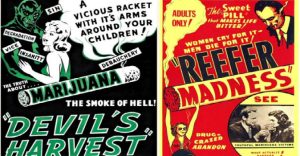 The popularity of joints skyrocketed through the 1920’s and 30’s, which makes what happened next an even harder pill to swallow. It’s hard to image that popularity of cannabis could have tanked so far in this historical period, but due to anti-cannabis propaganda and what can be called a “smear campaign” the Marihuana Tax Act of 1937 was signed into effect.
The popularity of joints skyrocketed through the 1920’s and 30’s, which makes what happened next an even harder pill to swallow. It’s hard to image that popularity of cannabis could have tanked so far in this historical period, but due to anti-cannabis propaganda and what can be called a “smear campaign” the Marihuana Tax Act of 1937 was signed into effect.
*** By Using the Term “Marihuana”, lawmakers hoped to accentuate the Latino Origins of the word to promote racially based anti-immigration sentiments among Americans towards Hispanic communities
 The reasoning this act was able to pass was due to the director of the Federal Bureau of Narcotics, Harry J. Anslinger and newspaper giant William Randolph Hearst. To help cement his new department, Anslinger decided to target cannabis due to its widespread recreational use among Hispanic and African American communities resulting in the many of the racial prejudices we unfortunately still see today in how these two communities and cannabis are viewed.
The reasoning this act was able to pass was due to the director of the Federal Bureau of Narcotics, Harry J. Anslinger and newspaper giant William Randolph Hearst. To help cement his new department, Anslinger decided to target cannabis due to its widespread recreational use among Hispanic and African American communities resulting in the many of the racial prejudices we unfortunately still see today in how these two communities and cannabis are viewed.
William Randolph Hearst was more than willing to help Anslinger in his war on weed due to his major investments in the timber industry (hemp was its biggest competitor) and frankly because he was an incredibly racist individual, especially towards Mexican communities. For those reasons he helped Anslinger develop propaganda that condemned cannabis for the “insanity” it causes and depicted Mexicans and African Americans as stupid, lazy, and violent marijuana smokers. As a result of all the racial and cannabis-related propaganda these men helped fund, cannabis popularity heavily dropped, and joints went with it.
The 60’s Resurgence
 After this long dip in popularity, something changed. The 1960’s gave rise to counterculture in the United States, and those who grew up watching racially charged cannabis propaganda realized that they were lied to, and that cannabis did in fact not cause violent and murderous insanity. The 1960’s and 70’s personified the broken relationship between the United States Government and the American people as these decades were marked by the notion of fighting the authority, which gave rise to Hippie Culture in the United States.
After this long dip in popularity, something changed. The 1960’s gave rise to counterculture in the United States, and those who grew up watching racially charged cannabis propaganda realized that they were lied to, and that cannabis did in fact not cause violent and murderous insanity. The 1960’s and 70’s personified the broken relationship between the United States Government and the American people as these decades were marked by the notion of fighting the authority, which gave rise to Hippie Culture in the United States.
Hippie-culture during this time was marked by peaceful rebellion against the man, and what was their ultimate symbol of this rebellion? Correct, it was the joint! Joints were the ultimate symbol of peaceful protest and counterculture sparking the entire hippie culture with clothes, accessories, and even products inspired by the joint. Things such as belt buckles and jewelry with hidden roach clips installed, wider rolling papers to pack more cannabis, and even a rolling paper with an installed roach clip wire!
Despite the illegality of cannabis at the time, joints surpassed their popularity of pre-prohibition days in this new peace and love hippie counterculture. Joints even made their way overseas to the soldiers in Vietnam. It is said that their rampant use of cannabis was unprecedented with many officers claiming around 70-80% of soldiers had utilized cannabis while overseas.
Many officers even allowed for the under the table sale of cannabis on many of their bases in Vietnam. For about $2 an American soldier in Vietnam could get a pack of cigarettes that had been emptied and rolled with cannabis instead.
Modern-Day Joints
Since this time joints have only reached further heights in popularity and cementing itself in stoner culture as one of the easiest and most iconic ways to smoke cannabis. As joints have entered the modern era, we have only seen more ways to improve and build upon the past traditions and ingenuity of those who smoked joints before us. Things such as specialized rolling papers, further refined roach clips, and even infused joints. The accessories and forms of joint products all take a piece of past stoner traditions with them and are a testament to the ingenuity of stoner culture.
So, the next time you come on down to your local Nectar to pick up your favorite Nectar branded gold pack, or many of our other pre-roll selections such as Mother Magnolia, Smoke-Rite, and the multitude of infused joints we sell, remember that there is a rich history behind every bud of weed, every way we smoke it, and every accessory we use to further enjoy cannabis. That is something we should take pride in as we carry on the rich history and ingenuity of all the past stoners before us into the future.



